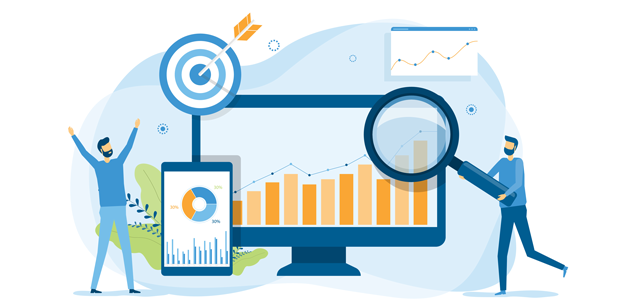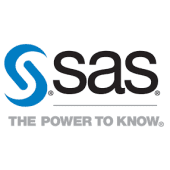
For a more resilient future, organisations will need analytics
Today, organisations of all types are having to change their perspective - of how to do business, of how to collaborate with remote employees, of how to best engage with customers, and more.
Resiliency is a resounding theme as organisations focus on becoming better at what they do every day, and more able to thrive over the long term, regardless of how the world changes.
Knowing this, it’s not surprising that the COVID-19 crisis has also exposed weaknesses in public and private organisations’ resilience. The impact of issues such as organisational silos, digital immaturity or process inefficiencies have been magnified, exposing areas that need maturing.
So, what do we mean by resilience?
Resilience requires two critical ingredients. First, it requires self-awareness - the ability of an organisation to understand its own strengths (critical assets and processes necessary to maintain business continuity) and weaknesses (based on risk assessments and scenario analysis). Second, it requires agility and scalability - the ability of an organisation to adapt to unforeseen events, in various ways.
On its own, resilience won’t necessarily be enough to tackle the challenges ahead for many organisations. But resilience, coupled with technologies like advanced analytics and machine learning, has the power to help businesses make it through this crisis and beyond.
Driven by necessity, changing for the best
The current crisis is proving to be a catalyst for change in business practices to improve resiliency, and an accelerator of digital transformation across all industries. These changes will deliver benefits far into the future, transforming industries to improve efficiency, adaptability and create new business models.
We’re seeing this acute transformation in a few key areas. Marketing departments, for example, will have to revisit their go-to-market approach, becoming more reliant on their digital marketing strategy, as in-person trade shows and conferences are on hold. When all touch points with prospects and customers are digital, the role of data, analytics and customer intelligence becomes even more critical. Creating new channels on social media and developing new ways to engage with customers in the virtual world, requires the analysis of multiple sources of data, for example to understand customers’ preferences, behaviours, propensity to buy or to go to the competition, or to identify new market opportunities, design go-to-market strategies, and measure the effectiveness of marketing campaigns so the approach can be continuously improved.
To achieve this, and accelerate the necessary transformation, organisations will need to quickly integrate new data streams and to leverage advanced analytics capabilities without necessarily having to hire highly specialised (and expensive) data scientists.
Supply chains will also have to become more agile. Despite unprecedented circumstances, many supply chains were simply unable to handle the impact of COVID-19. Analytics has the ability to help design factories for greater adaptability, allowing scaling up or down production or re-purposing production lines at short notice (as LVMH did when they decided to switch production from perfume to hand sanitiser). Fully digitised supply chains will make it easy to move production from one factory to another, to provide alternative sourcing and logistical network options, or to adopt a ‘made-to-order’ approach. Further, better integration of demand forecasting and planning with POS data and using machine learning technologies can help predict shifting consumer trends at short notice.
Financial risk management will see increased focus, particularly when it comes to liquidity and cash reserves, as demonstrated recently by JP Morgan Chase. Scenario analysis, contingency planning and stress testing will go up on the list of board-level priorities. The financial resilience of an organisation heavily relies on its ability to consolidate risks across lines of business and to have an accurate representation of its true exposure. In a time of crisis, circumstances and market conditions change quickly and it is critical to be able to reassess the risks in real time.
For example, when the economic activity slows down, people are more likely to default on their credit repayments, loans and mortgages. A bank must be able to identify where those defaults are likely to happen, to forecast the impact on cash reserves, and then to take remediative actions to mitigate the risks or to limit the impact, for instance by freeing up cash reserves where possible, or adjust the balance between building capital and paying dividends. As a result, forecasting and predictive analytics will play a key part in strengthening organisations’ risk assessment and readiness and allow them to better plan for the unknown.
Fraud and cyber security represent another type of risk that is amplified in a time of crisis, especially when large numbers of people and businesses quickly turned to digital technologies to carry on with work, personal lives and more. Unfortunately, opportunists are pouncing to exploit a crisis like this for personal gains, and industries such as retail, government and healthcare have the opportunity to raise the bar against various types of fraud with robust analytics.
This list is certainly not exhaustive, but one thing is clear: organisations need, more than ever, reliable data and advanced analytics to create actionable insight and make the right decisions at scale.
Analytics that can weather any storm
To quickly adapt to unforeseen events, as seen with the pandemic, organisations will need to create new insights and make informed decisions in the moment. This includes embracing analytics that are automated, scalable and adaptable, specifically these three areas:
- Democratisation of analytics and data-literacy: Bringing analytics and the ability to make data-driven decisions to everyone at an organisation - not just to a few technical specialists and data scientists - is critical. By adopting a self-service approach to accessing and analysing data with user persona-friendly user interfaces, organisations can foster a culture of self-sufficiency and innovation.
- Governance and agile processes: Organisations must establish repeatable, controlled and agile processes in order to support adaptable analytics. DataOps and ModelOps frameworks will streamline data and model provisioning, deployment and monitoring. Further, governance of analytic pipelines will allow for an instantaneous view into what models are used and how, and quickly determine what models may need to be adjusted in exceptional market conditions.
- Open cloud-based architecture: Flexibility and scalability can be achieved with a cloud-based architecture that supports multiple open source and commercial analytics tools, accessed from anywhere. The elasticity of the cloud can provide the flexibility needed to leverage new data sets, to ramp up compute bandwidth to develop, train and deploy new models, and to drive business decisions at scale.
No one could have predicted the widespread, long term impact of COVID-19 on a range of industries, but organisations that strengthen their approach to analytics now, will only be improving their business resilience for when the next downturn happens - whenever that is and whatever that looks like. With a solid foundation in place - one that combines resilience strategies and technology - organisations will not only be able to adapt, but truly thrive.


